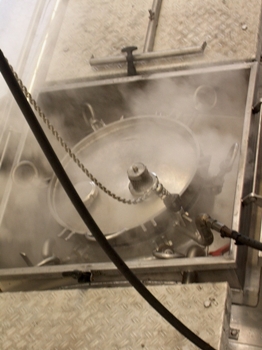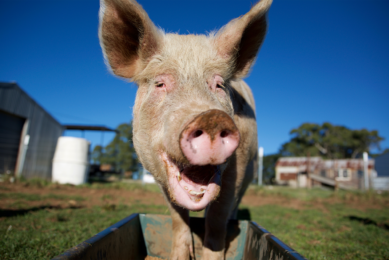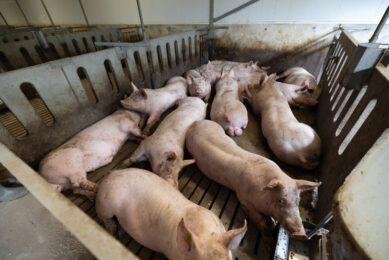Harmonisation needed for biocidal products

The Biocidal Products Directive 98/8/EC intends to harmonise the European market for biocidal products and their active substances. An International Conference hosted by Akademie Fresenius in Dusseldorf (Germany) on 23 and 24 March 2009, informed about the latest status of the directive’s revision.
By Dick Ziggers
The Biocidal Products Directive 98/8/EC aims to ensure a high level of protection for humans, animals and the environment. However, there have been various problems with the implementation of the directive that shall be addressed by the ongoing revision process. At the 9th International Conference of the Akademie Fresenius in Dusseldorf, Germany, guest speakers from the industry talked about market difficulties and explained what they expect from a revised directive. EU Member State activities to promote harmonisation were on the agenda of the two-day conference as well as several approaches for risk and exposure assessments delivered by biocide experts.
Simplification and clarification
The Biocidal Products Directive (BPD) has been criticised for evolving high costs of compliance, in particular for small and medium enterprises. This is one of the reasons for the revision, Karola Maxianova (European Commission) said at the Fresenius Conference.
“There is need for simplification and clarification,” she added. According to Maxianova, the main elements under consideration are product authorisation, data sharing, data requirements, fees and the scope of the directive. Besides that, there is the question whether the revision should lead again to a regulation or to a directive – the latter of which would apply immediately in EU Member States. Although the scope of the BPD has already been realised as a flaw right from the start, nothing has been done about it, Sabine Gärtner (Federal Ministry of the Environment, Germany) concluded at the Fresenius Conference: “With the BPD, the relation between standard and special cases seems to be particularly disproportionate. This is one of the main reasons why the directive needs to be revised.” Where procedures are concerned, economy and implementation authorities share many interests, Gärtner suggested: “It is an objective interest of the authorities to simplify authorisation procedures in order to accelerate decisions and reduce bureaucracy.”
Nevertheless she considers the directive an improvement, as several thousand previously unregulated biocidal products (18,000 in Germany) are now subject to legal provisions.
Innovation needs focus on products
Less than ten new active substances have been developed since 2000. “What is happening to innovation?” Andy Adams (Bayer Environmental Science) asked the attendees. More than 700 active substances will disappear due to the BPD, he said. According to Adams, the financial load that is inherent in complying with the data requirements, formatting and fee structure is acting against low risk compounds and products that ought to be encouraged. If the focus for low risk was on the product and not the active substance, this might encourage innovation at the product level on a scale which is blatantly absent at active substance level, he argued. Adams: “Such innovation might be an encouragement to the industry – including small and medium enterprises – to develop delivery systems, devices or other innovative technologies to reduce risk, independent of a specific active substance.”
Harmonisation needed
First dossiers for biocidal products are expected to be submitted to agencies in 2009. As products are mostly a multi-substance mixture with one or more active substances and several further ingredients, their evaluation is more complex than the evaluation of a single active substance as it is done during the review programme, Maura Kasper (Federal Environment Agency – UBA, Germany) explained to the audience. For some product types, experiences with product evaluation are already available on national levels beyond the scope of the BPD. However, for most product types experiences are lacking so far. “Due to the mutual recognition of product authorisations between the EU Member States foreseen by the BPD, harmonisation of data requirements for product authorisation as well as harmonisation of risk assessment is urgently needed,” Kasper said. Results from the risk characterisation of active substances are transferable to the product evaluation, but do not necessarily meet the demands of the risk assessment of the biocidal products in total, Kasper explained.
“It is at product level that the BPD will impact the market”, added Didier Leroy (Troy Corporation Europe) underlining the industry’s point of view.
He named the upcoming product authorisation a huge burden for biocide product applicants and for national authorities. He criticised that there were still too many open issues whereas the industry needed legal certainty to operate. Leroy: “I hope that pragmatism will develop and balance the real need for safety and economic interests.” He made the case for a major revision of the BPD, as in his opinion a central system would solve most issues.
Biocides and the directive Directive 98/8/EC of the European Parliament and of the Council on the placing on the market of biocidal products was adopted in 1998. According to the directive, Member States had to transpose the rules before 14 May 2000 into national law. The Commission adopted the original proposal for the directive in 1993. The Biocidal Product Directive aims to harmonise the European market for biocidal products and their active substances. At the same time it aims to provide a high level of protection for humans, animals and the environment. In the directive biocides are divided into four main groups: Main group 1 – Disinfectants and general biocidal products These product types exclude cleaning products that are not intended to have a biocidal effect, including washing liquids, powders and similar products. Main group 2 – Preservatives Preservatives as referred to in this directive do not affect the feed industry. Main group 3 – Pest control Product-type 14: Rodenticides Main group 4 – Other biocidal products Product-type 20: Preservatives for food or feed stocks – Products used for the preservation of food or feed stocks by the control of harmful organisms. Full information on the directive can be found at http://ec.europa.eu/environment/biocides |
Feed Tech Vol. 13 No. 4, 2009











